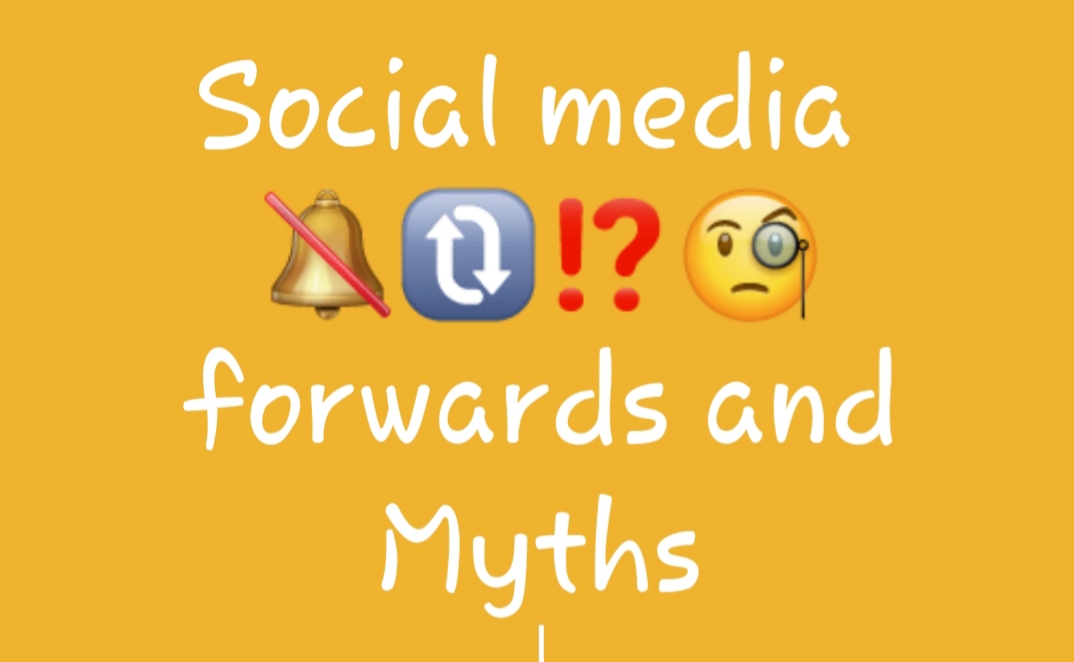Check that forward: The whys and hows of social media myths on the Covid-19 psychological crisis
Serah N. Kasembeli, 09.04. 2020
There is an escalation of hegemonic, confusing and misinforming narratives on social media, predominantly now around Corona Virus/Covid-19 crisis. This surge is attributable to the emotional- mental tensions that people have had to grapple with, emergent from a range of excess media reporting and daily updates on the virus, border lockdowns, cessation of travel, social distancing restrictions to the sudden demand for family to stay together under one ‘small’ roof. There is, therefore, more time at people’s discretion outside regular work routines. All these factors have culminated to a rise in levels of the anxiety and panic, some of which find their way out in social media forwarding loops.
Some of the predominant social media outlets that have acted as gutter and garbage space, but also a space of consolation are WhatsApp and Facebook. These two particularly suffer excesses of toxic forwarding of messages. For example, the onset of the Corona Virus outbreak emerged with messages that conveyed claims that people of black skin/blood are immune to the Virus. Recently, there are circulation of rumours that there has been a discovery of the cure for Covid-19. Uncensored messaging has escalated constructions, narratives, myths and categorisations around gender, race, religion, knowledge and knowledge production, medicine, Africa etc. The domino effect of these forwards is that one message can reach millions of people in a day.
Take the case of WhatsApp groups. Some social media groups examine every information circulated in their circles, and their members comprise cultural critics who are immensely alert regarding culturally oppressive narratives and racist constructions. Such groups are keen to abort the circulation of unverified information, and discourage their members from sharing forwarded messages in the group. These kind of groups rather advise the group members to stick to the groups core goals.
Other groups have great percentages of informed people, such that when the myths are forwarded, more than half of the group members weigh-in and the myths are thwarted from circulating further. However, on the other end, there are groups that majority of members consume information at face value. Some of these circulate the cliché argument such as that everyone can think for themselves, and that no one has the monopoly to instruct in the group. The danger with this laissez faire approach is that it is an oxymoron on domineering. It allows an overload of unverified information because members do not feel indebted to crosscheck messages before they forward. The culminating effect is that such messages get the leeway circulate under the pretext that ‘everyone can think for themselves’, and end up with someone who cannot determine their credibility.
Most of us with some sort of societal imposed standing have received individual messaging from friends or family members, asking us to confirm if some of those messages are true. We have had to do the toxic work that entails writing back short sms’s/dms in response, albeit, sometimes in vain. Some of these social myths still have more weight among such groups because they are signed out with a Dr title, or Chinese insider at Wuhan, or caption as from a famous world leader such as Obama addressing Africans and so on and so forth.
Some countries have restricted the forwarding of such messaging, and demanded of group administrators to curb mis-information. WhatsApp and facebook has the initiatives to limit the number of messages a user can forward. Google has also provided a Fact Checking Tool. However, this policing approach should never have been the case in the first place. It is never difficult to identify one of such suspicious messages. For instance, be alert about any message that sign’s out as from a Doctor, PhD, an inside Soldier or Government Official, or a pastor/priest. Look at the diction of the message that claims to be Obama’s. Cross check on google images/photos of individuals, for example the one that claims to be the wife of Canada’s Prime Minister in the ICU. Beware that some messages are partially accurate, some contain bits of truth while the rest is misleading information. Take note that Emotional posts tend to be used to appeal for sympathy and they unconsciously distract readers way from critical responses.
The further easier way to abort these false constructions is to borrow from Humanities and the Social Sciences. This is a simple non-academic one line summary: Any narrative that will reproduce oppression of a group of people, any write-ups that categorise people in terms of race and gender, Europe/USA versus Africa/ India/South America should be interrogated, whether they contain any elements of truth in them or not. In other words, these narratives and memes emerge from histories of slavery, colonisation and oppression, and are continued forms of slave and colonial violence that we should question. There is a demand now more than ever before to understand how narratives of oppression, race and gender work.
The excesses of social media forwards produce the toxic nature produced by the unconscious demands to write back in response to outright erroneous messages. However, there is dire need for cultural scholars, artists, researchers and community leaders to enlighten their circles when the need arises.
Dr Serah N.Kasembeli is a Literary and Cultural Studies Scholar, Academic Writing Consultant and mentor. She researches on Epistemic Violence/Colonial Violence, Historical Trauma and its Repair. Her latest research is titled “The South African Student #Fallist Movements: Xenophobia and the Impossibility of Including the African ‘Other’.”
Look out for more of these conversations at drkasembelicentre.org. Do write to us also if you would like to respond to any social media myths in your community.




Great ….see you at the top